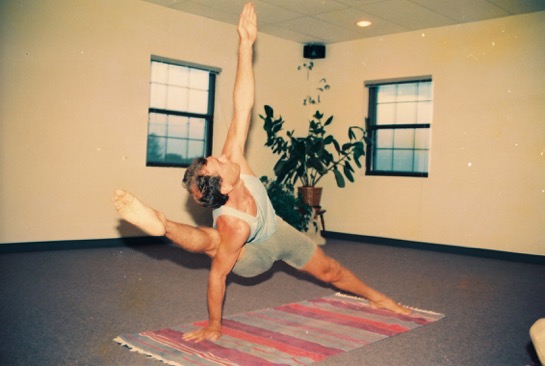
ASHTANGA YOGA
Ashtanga Yoga is a traditional form of yoga which was taught by Sri. K. Pattabhi Jois in Mysore, India. Linda and Gerald were the first in Paris to establish an Ashtanga school which offered a full program of Mysore style classes. Linda started teaching traditional morning Mysore in Paris in 2002 and when Gerald moved to Paris from India (where he was one of the first French men to be a direct student of Sri. K. Pattabhi Jois with whom he studied 8 years) they established Ashtanga Yoga Paris in 2004. They now offer a complete program of Ashtanga for all levels from beginners to advanced and a team of inspiring and skilled teachers whom they’ve trained over the years.
We approach the Ashtanga Yoga practice in a unique way, paying close attention to alignment in order to do the postures safely with a profound inner awareness. This adds a therapeutic aspect to the yoga where one can learn to heal themselves; helping to correct previous injuries, mend emotional wounds or simply maintain a healthy body and mind.
This method of dynamic yoga involves synchronizing the breath with a progressive series of postures, a process producing intense internal heat and a purifying sweat that detoxifies muscles and organs. The result is improved circulation, a light and strong body and a calm, focused mind. The Ashtanga Yoga system places equal emphasis on strength, flexibility and stamina. Through regular practice of the physical postures of Ashtanga Yoga, personal insights begin to manifest. We become aware of what we put in our bodies and how we interact with the world around us; growing our ability to concentrate fully and live a healthier, more contented life. If one dedicates oneself to this practice it will change that person’s life, and possibly those close to them!
At AYP we also teach Restorative yoga which is an amazing alternative to Ashtanga when one is looking for a soft, relaxing style of yoga, as well as Vinyasa yoga that is founded on the core principles of Ashtanga.
In one of the most influential classical texts on yoga, The Yoga Sutras of Patanjali, you will find the Sanskrit word, Ashtanga, which literally means “eight limbs”. Here Ashtanga Yoga is defined by these 8 limbs as a progressive path to self-realization:
-
Yama: self-restraints
– Ahimsa – non-harming
– Satya – truthfulness
– Asteya – non-stealing
– Brahmacarya – continence
– Aparigraha – greedlessness or taking only what is necessary - Niyama: observances
– Sauca – cleanliness or purity
– Santosha – contentment
– Tapas – austerity or self-discipline
– Svadhyaya – self-study
– Isvara pranidhana – surrender or devotion - Asana: physical practice of yoga postures
- Pranayama: breath control exercises
- Pratyahara: control of the senses
- Dharana: concentration
- Dhyana: meditation
- Samadhi: absorption
